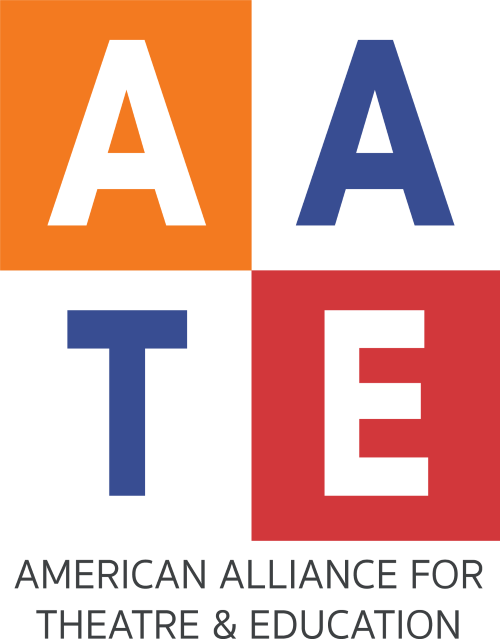Core Arts Standards
About the National Coalition for Core Arts Standards
The National Coalition for Core Arts Standards (NCCAS) is a partnership of organizations and states who will lead the revision of the 1994 National Standards for Arts Education. NCCAS plans to complete its work and release new, national voluntary arts education standards at the end of 2012. The standards will describe what students should know and be able to do as a result of a quality curricular arts education program. NCCAS is committed to developing a next generation of voluntary arts education standards that will build on the foundation created by the 1994 document, support the 21st-century needs of students and teachers, help ensure that all students are college and career ready, and affirm the place of arts education in a balanced core curriculum.
NCCAS will make the creation of the new arts standards an inclusive process, with input from a broad range of arts educators and decision-makers. The revised standards will be grounded in arts education best practice drawn from the United States and abroad, as well as a comprehensive review of developmental research.
The NCCAS Leadership Team is comprised of the following organizations:
Proposed Details of Next Generation National Arts Standards
consensus as of August 31, 2011
- National Arts Standards should extend PreK-14.
- Extending to 14 (college sophomore) will enable standards writers to work with higher education colleagues to delineate college general education arts expectations that articulate with Pre-12 expectations and might also apply to students in technical/community/junior colleges.
- Such general education expectations would provide the basis for new AP and other exams/courses in the arts, designed to enable students to master and demonstrate their mastery of college-level work.
- Based on the work described above, designers of teacher preparation can then treat teacher standards in part as what students whomajorin an art form should learn beyond the core standards forallcollege-educated students.
- National Arts Standards should include Big Ideas/Enduring Understandings. At least some of these will be shared across art forms.
- National Arts Standards should help teachers focus their work, rather than providing an unrealistically broad scope.
- In other words, standards should make more choices for schools/teachers than recent eclectic curricula and standards have been willing/able to make.
- Thoughtful choices will cause some initial controversy, but ultimately be a great boost to education in the field.
- National Arts Standards should explicitly reflect embedded 21st century skills (we’ll need to look at both the Kay/Partnership and ISTE models).
- National Arts Standards should be based on the expectation that students, regardless of later elective choices, learn a common body of skills/content in each art form Pre-8.
- National Arts Standards should be grade-by-grade from PreK-8 in each arts area.
- To accommodate delivery systems that vary from district to district and state to state, writing committees will consider whether to "level” standards – i.e., outline successive levels of competence – in secondary electives strands in all of the arts. Designers must be sensitive to the possibility that substituting titles such as "emerging,” "novice,” and "intermediate” for specific grade level expectations might offer states/districts/schools that care less about arts learning the "wiggle room” to embrace a lower standard of expectation for their students.
- To create standards delineated grade by grade, writers will need to incorporate specific content to an extent that the original standards avoided.
- Writers could create outlines of key categories of content, more specific than those provided in the NAEP framework.
- Within those categories, writers could provide "literature lists” and other helps. Such helps could also be generated as part of a wiki-ish process.
- National Arts Standards should be differentiated for electives.
- Standards should be developed for NCES elective courses/codes, as revised in 2010 with input from professional arts education organizations.
- Electives may begin at least as early as the introduction of elementary instrumental music, or as late as a college arts course to fulfill a general education elective.
- Elective standards should take the form of "value added” outcomes – they should delineate what students making a particular elective choice should learnbeyondthe core PreK-8 standards expected for all.
- With the help of higher education/research colleagues including College Board, standards writers should base grade level (or possible cluster) expectations on what research reveals that students can do when provided with quality instruction over time.
- Standards writers should, to the extent possible, validate National Arts Standards’ research-based-but-still-somewhat-theoretical expectations by examining student work uploaded by skilled teachers – perhaps using wiki (or EdSteps?) tools – that demonstrate what well-taught children actually do, and also provide the basis for benchmarking (anchor sets), pre-service and in-service teacher training.
- This student work might be based on published indicators, or even on common assessments that distill discrete expectations into more complex performances with scoring tools.
- The next generation of www.CTcurriculum.org, which will be completed by spring 2011, is one tool that could facilitate this process; another is the SCASS/Arts database of on-demand assessment items.
|
